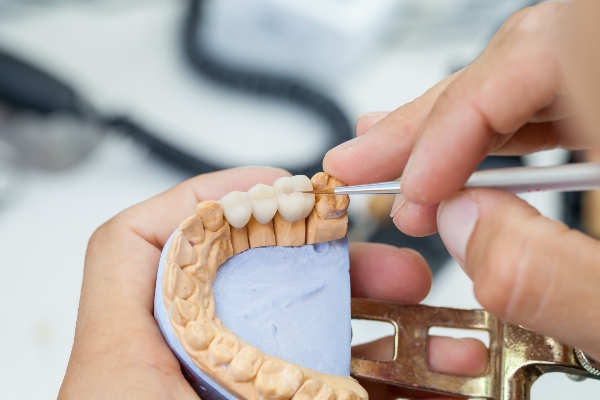 If you have ever gotten a filling or watched someone put in their dentures, you are familiar with the world of dental restorations. Although restorative dentistry focuses primarily on tooth and gum preservation, there is considerable overlap between dental and jaw health. As a result, dental restorations play a significant role in jaw restoration.
If you have ever gotten a filling or watched someone put in their dentures, you are familiar with the world of dental restorations. Although restorative dentistry focuses primarily on tooth and gum preservation, there is considerable overlap between dental and jaw health. As a result, dental restorations play a significant role in jaw restoration.
Dental restoration
To better understand the relationship between the teeth and the jaw, it helps to develop a foundation of knowledge on dental restoration practices.
What are dental restorations?
Most procedures that restore a tooth’s form or function fall under the umbrella of restorative dentistry. While these reconstructions can provide immense aesthetic benefits, enhanced appearance is not their primary goal.
What are some examples of dental restorations?
Dentists use fillings, the most recognizable type of dental restoration, to plug cavities and prevent the holes from trapping harmful bacteria inside the tooth. Most fillings are composed of metal, composite resin, ceramic, or porcelain. Although metal fillings are the most affordable option, they do not blend in with the surrounding teeth. For a more attractive appearance, patients prefer white filling materials.
Like fillings, crowns and bridges serve an essential purpose: they substantially reduce the risk of infection. Crowns replace natural teeth that have developed decay or disease, taken heavy physical damage, fallen out, or been extracted. Similarly, bridges consist of one primary crown with caps on each side. This bridge of crowns creates a more secure fit for those missing several teeth in one section of the mouth.
Although these procedures provide critical functionality, they often leave patients feeling happier and more confident. Combined with jaw restoration, dental restorations can dramatically change the look and feel of a patient’s smile.
Jaw restoration
From minor corrections to major surgery, options for correcting dysfunctional jaw joints or obtaining relief from jaw pain are vast. Dental restorations may not treat these issues directly, but the jaw still reaps countless benefits from simple dental restoration practices.
What is the difference between a dental restoration and a jaw restoration?
Dentists provide dental restoration services to patients with gum or tooth abnormalities, especially if those issues impact the patient’s overall health. On the other hand, jaw restoration is often necessary to fix a musculoskeletal problem. Dentists only involve the jaw if essential as a prerequisite to providing certain forms of dental restoration or if a patient needs dental implants.
How can you restore your jaw with dental restorations?
Dental implants reinforce the jaw by attaching securely to the joint. In some cases, a dentist may require that a patient get a jaw bone graft before getting an implant, as a weak jaw cannot support an implant. Once placed, however, implants improve the patient’s jaw health. These benefits include preventing jaw bone density loss and stabilizing joints that, when misaligned, lead to painful conditions such as TMJ or persistent headaches.
Conclusion
Dental restorations can provide immense benefits for the jaw and play a substantial role in restoring the jaw’s mobility, functionality, and even appearance. For many, dental restorations are the first step toward a stronger, healthier jaw.
Request an appointment or call R. David Brumbaugh, DDS at 214-306-4402 for an appointment in our Dallas office.
Related Posts
People who are looking to improve their smiles often consider the various dental restorations that are available. These restorations can fix a number of issues, including missing, fractured, chipped, decayed, and weakened teeth. The purpose of the procedures is to improve not only the look of the teeth but also their function. Depending on the…
For patients who have damaged or decaying teeth, dental restorations may be a necessity. Dentists use a variety of restorative procedures to protect and repair the structural integrity of an individual's teeth. Some of the most common restoration procedures may include dentures, crowns, and fillings.No individual should suffer from severe tooth pain or discomfort. Decaying…
Dental restorations have been used for thousands of years. In fact, a 2012 article published by The New York Times details the discovery of a 6,500-year-old human jawbone. Considered the earliest evidence of dental fillings, it had beeswax in one tooth, which researchers believe was to ease the pain of a crack. These days, restorations…


